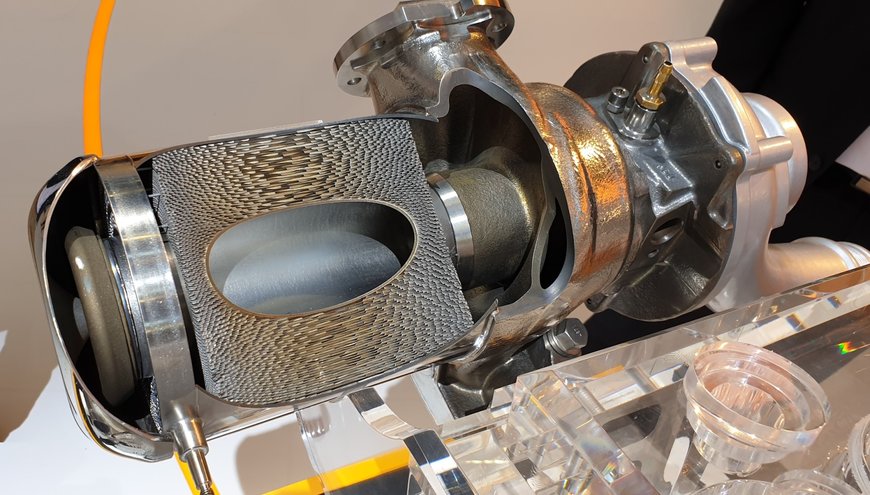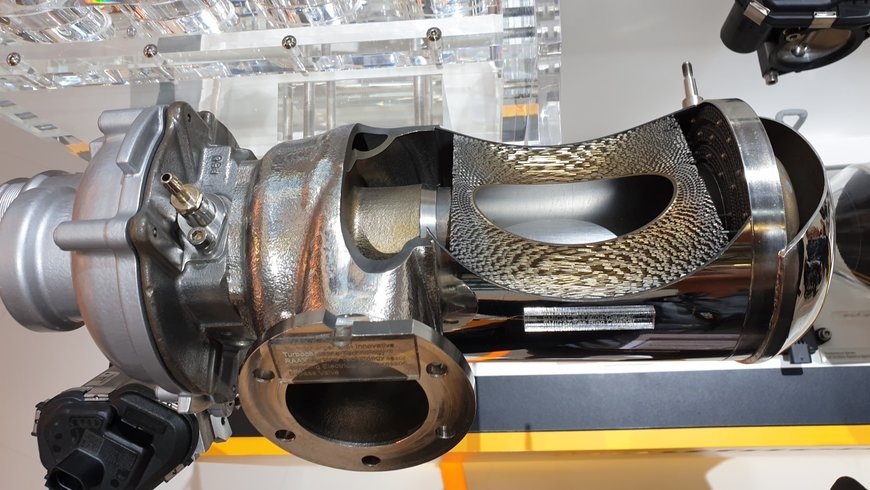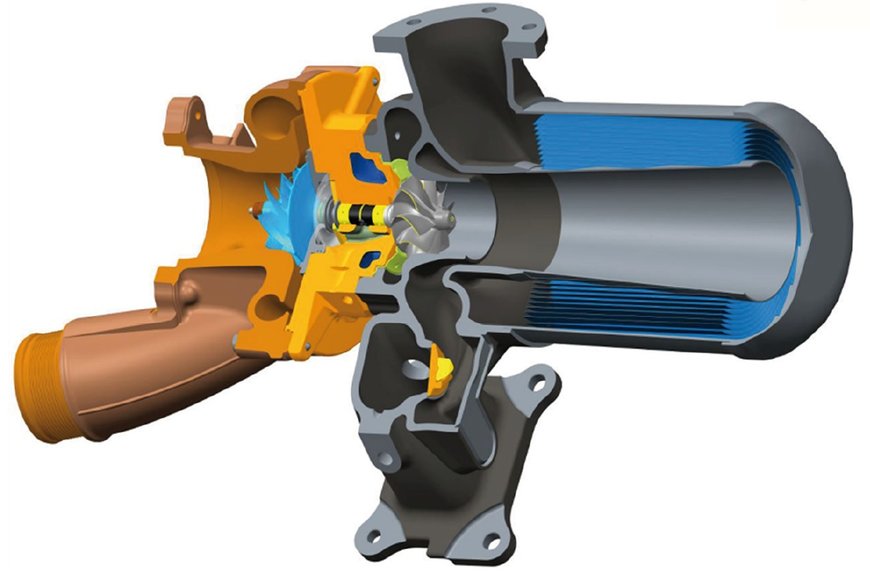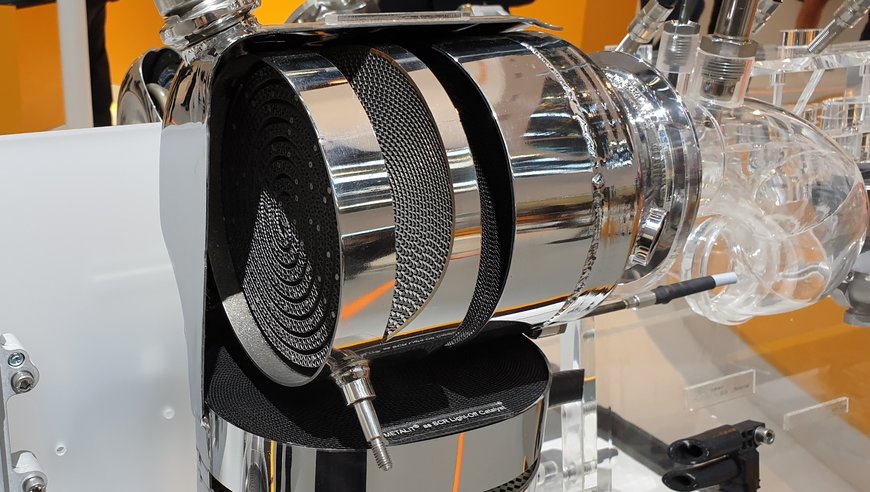TECH FOCUS: Continental’s turbocharger/catalyst integration yields greater efficiency
After exiting the cylinder head, the exhaust gases from the latest supercharged petrol engines pass through the turbocharger turbine and then through a 3-way catalytic converter. Their path must be as short as possible in order to limit heat loss and reduce the time required to initiate post-cleaning after a cold start. However, this proximity complicates the operation of the catalytic converter, which receives unstable gas flows of different temperatures and different lambda coefficients (oxygen content). Continental has developed a turbine outlet integrating a mixer internal to the catalyst and an overflow valve that does not interfere with the post-cleaning operation.

From the turbine outlet, the gases pass through a mixer, a heater and a catalyst without loss of heat.
With Continental's new compact solution, the gases leaving the turbine pass through a tube in the centre of the catalyst and are then redirected by 180° to the substrate coaxial to the tube for processing.
Rolf Brück, Manager at Continental Emitec GmbH, explains the advantages of this arrangement: "The gases leaving the turbine flow directly into the tube without heat loss, because it heats up the catalyst substrate.”

The 180° deflection acts as a flow mixer. Rolf Brück: "This mixer has two advantages due to the heterogeneity of the oxygen content of the flow in a conventional arrangement. The first is that the lambda sensor can measure a rate in a stabilized flow and can therefore be placed close to the turbocharger. The second advantage is a better distribution of heat over the entire surface of the substrate, whereas the substrate can reach critical temperatures in a conventional set-up.”
Continental adds that the stabilized flow and the conical shape of the coaxial centre tube improve the efficiency of the turbocharger. The exhaust gases are then directed to the other post-cleaning elements such as the second catalytic converter and particulate filter.

Compared to a conventional installation (left), the integration of the turbocharger and catalyst (right) provides better heat distribution on the substrate (relief valve 35% open).
Faster catalyst temperature rise prevents the combustion engine from being restarted just to maintain the substrate temperature, thus increasing the 100% electric running time of hybrid (plug-in) vehicles. A 4 kW heater at 48 V, located upstream from the substrate, can further accelerate the ignition of the catalytic converter or keep it at the right temperature. This heater can also be an important part of the post-cleaning process in anticipation of the forthcoming tightening of regulations.
Annular outlet relief valve
A study was carried out on a RAAX type turbocharger with the particularity of having a mixed, semi-radial/semi-axial turbine inlet instead of the usual radial inlet. As a result, the reduced size of the blades allows a reduction of about 40% in the moment of inertia of the turbine wheel.

In a conventional design, the discharge of gases from the relief valve is not ideal, as these gases, which arrive laterally, impair the flow stability and the homogeneity of the lambda coefficient.
Continental has therefore developed an annular outlet. Rolf Brück: "The discharge valve is slightly offset so that the gases coming out of the valve flow into a new chamber and are discharged into an annular section coaxial to the central tube. This ensures that the flow remains stable regardless of the opening rate of the relief valve.”

Mach number distribution (ratio between the local speed and sound velocity of a fluid) of the gas at the turbine outlet in a conventional arrangement and in Continental's solution
This new assembly is also compatible with a variable geometry turbine. Production of this integrated turbocharger and catalytic converter assembly is scheduled for 2022.
New post-cleaning system for diesel engines

Electric heater between a 4-way catalyst and an SCR module/particle filter
Continental also introduced a new diesel engine aftertreatment system consisting of a 4-way catalyst, an electric heater and an SCR and particulate filter module.
Rolf Brück explains: "At the turbine outlet, a first catalyst is capable of treating NOx at ambient temperature, while the subsequent SCR system can only treat NOx when it has reached its ignition temperature. The electric heater of 2 kW at 12 V or 3 to 4 kW at 48 V heats the gases to a sufficient temperature for the SCR to start working after 30 seconds. This heating also improves the vaporization of AdBlue and thus prevents deposition in the substrate.”
Author: Yvonnick Gazeau
Source: Continental

